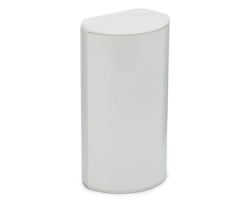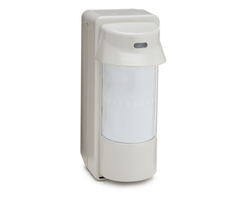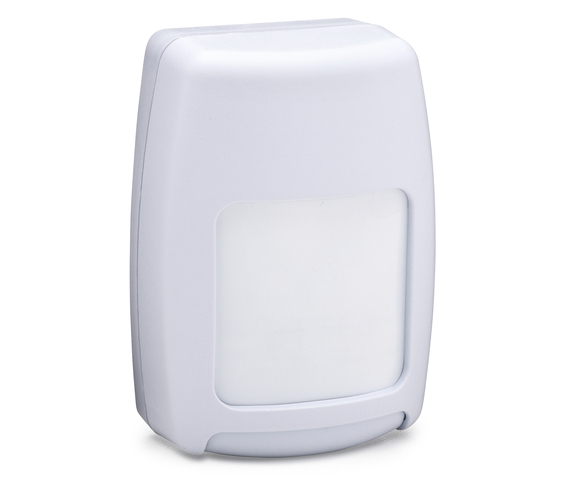Integrating Security Systems with Smart Home Hubs
Posted By Michael GorisHi DIYers! If you have a smart home setup, then you know how exciting it is when you add a new smart device. Now you have brand-new equipment that you can integrate into smart scenes and control from anywhere! But what about the central hub that serves as the "brains" of the setup?
The smart home hub is the unsung hero of a smart home network. The way that it works is that all smart home devices will connect with the hub. Whenever a command is sent out for one or more smart home devices, it will pass through the hub first. In that sense, the hub is what connects all of the devices in the network together. So without a hub, a true smart home network will not be possible.
What makes a smart hub unique is that it communicates with multiple types of wireless protocols. This should not be confused with a bridge, which only communicates with one type of wireless protocol. An example is the Lutron Caseta Smart Bridge, as it will only send commands to devices running the Lutron protocol (Clear Connect). That's not to say that bridges can't represent a useful part of a smart home setup. There are many great protocols that are operated through some type of smart bridge. But having a dedicated central hub can make controlling your smart home devices as easy as possible.
Naturally, it makes sense that many users want to integrate their alarm systems into their smart home networks. This way, they can have certain smart home devices respond to predetermined security events. An example could be having smart lights turn on automatically when a user walks into a room and sets off a motion detecting sensor. This type of setup is has become a reality for many users in recent years, as smart home technology continues to grow and evolve.
Unfortunately, it isn't as simple as just taking any security system and any smart home hub and having them suddenly work together. There are many compatibility issues and rules that must be kept in mind when integrating an alarm system into an existing smart home network. Some smart home hubs are easier to work with than others. And as this type of technology is still fairly new, there are still some issues to be worked out. But the beauty of integrating a security system with a primary smart hub, or even using the security system itself as the smart hub, is that it will facilitate a true connection between smart home devices and security devices.
We have already seen many users experience great success in using the Honeywell Lyric Controller as a secondary Z-Wave controller with a Samsung SmartThings Hub or as an integrated device with Apple HomeKit. In these situations, SmartThings or HomeKit will serve as the primary home automation controller. However, the user will still be able to have their Z-Wave devices respond based on actions taken by the Lyric. This could involve adjusting the thermostat automatically when a sensor is triggered or having a door lock itself when the system is armed. But keep in mind that the system may not be able to interact with every wireless protocol that is supported by the primary hub.
Many users are fine with having the security system itself serve as the primary hub for their smart home devices. Depending upon the wireless protocols involved, this can work quite well. For example, both the Qolsys IQ Panel 2 Plus and 2GIG GC3 Systems are Z-Wave Plus controllers that can be used as hubs for security devices and Z-Wave devices. When doing this, a user can control their Z-Wave devices directly through the panel or through the Alarm.com service. The Alarm.com Mobile App will even allow users to operate their Z-Wave devices from virtually anywhere in the world. The weakness here is that the user will be limited to using only wireless protocols that are supported by the alarm system. This might not be as many protocols as a dedicated home automation hub like Samsung SmartThings.
Alarm Grid will keep you up to date with new and advanced smart home automation technology and capabilities as it becomes available. We look forward to bringing you the latest news about this exciting technology and how it can help you get the very most out of your security system.

 It can be very concerning and scary to leave an elderly or disabled relative in their home alone. However, these people will often want to live as independently as possible and be able to take care of themselves. A panic switch like the 2GIG PANIC1-345 provides an ideal solution for these situations. If the user experiences a fall or medical emergency, they can quickly and conveniently get the help they need, even if nobody else is around.
It can be very concerning and scary to leave an elderly or disabled relative in their home alone. However, these people will often want to live as independently as possible and be able to take care of themselves. A panic switch like the 2GIG PANIC1-345 provides an ideal solution for these situations. If the user experiences a fall or medical emergency, they can quickly and conveniently get the help they need, even if nobody else is around. The Qolsys IQ Panel 2 internal glass break sensor functions in basically the same manner as any other standalone
The Qolsys IQ Panel 2 internal glass break sensor functions in basically the same manner as any other standalone  Both the IQ Panel 2 and IQ Panel 2 Plus Systems with an integrated glass break detector can be purchased from the Alarm Grid website. Protect your home or business with one of the world's best alarm systems!
Both the IQ Panel 2 and IQ Panel 2 Plus Systems with an integrated glass break detector can be purchased from the Alarm Grid website. Protect your home or business with one of the world's best alarm systems! The GC3 System is already known for its bright colors and responsive touchscreen controls. This makes the system a joy to use for end users. But what if a user wants to control their system from a second location. That is where the 2GIG SP1 comes in. Previously, the only touchscreen keypad option was the
The GC3 System is already known for its bright colors and responsive touchscreen controls. This makes the system a joy to use for end users. But what if a user wants to control their system from a second location. That is where the 2GIG SP1 comes in. Previously, the only touchscreen keypad option was the 






